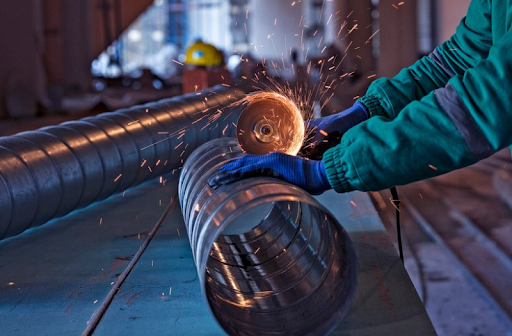It is essential to protect welders from harm in any welding process, and appropriate clothing would go a long way in achieving this objective.
In this informative blog post, we’re going to shed light on some of the most significant safety rules for welders to follow. So, let’s have a look at them individually.
1. Welding Must Be Done in a Specific Safe Area
Before welding, a welder should pay attention to some factors of the working environment, also referred to as ambiance.
It is wise to assess if there is any flammable equipment or any material stored near the welding area. The distances allowed for human exposure, and generally taken as safe distances from the welding area, are 35 feet (10 meters).
2. Minimize Exposure to Fire Risks
Suppose it is impossible to exclude all fire hazards. In that case, it is necessary to provide protection to the immovable fire hazards and prevent heat, spark, and hot slags generated by welding.
3. Address & Mitigate the Risks
Welding comes with a lot of risks, many of which have to do with health complications (for instance, exposure to fumes and ultraviolet light). Specific general welding hazards may differ depending on the location in which it will be performed.
So, it is wise to conduct a risk assessment before extending the work. This will assist in putting in place measures for handling or mitigating risks. Otherwise, there is no permission to do any welding and cutting work at the construction site.
4. Ensure Proper Use of PPEs While Working
When present on the operational floor, welders should ensure they wear appropriate PPE to prevent exposure to risks that may lead to physical harm or sickness.
Some of the PPE that welders should use include long-sleeve shirts, long pants with cuffs blanch, welding helmets/hoods – such as a pancake hood and goggles, respirators, hearing protection, shoes & covers, gloves, etc.
5. Maintain Your Welding Equipment
A railing, safety belt, lifeline, or other comparable equipment must shield a welder or assistant working on platforms, scaffolds, or runways from falls. Welders should keep welding cable and other accessories in a manner that will not obstruct passageways, ladders, and stairways.
6. Ventilate & Make the Welding Area Oxygen-Rich
Another way of avoiding welding mishaps and safeguarding workers is through the provision of adequate fresh air.
Ventilation measures exist to remove air contaminants from a worker’s work area, eliminate flammable or combustible gases or vapors, and prevent an oxygen-rich or oxygen-deficient environment.
7. Do Not Get Exposed to Toxic Fumes and Gases
Local exhaust or general ventilating systems must be installed and designed in such a way that the concentration of the toxic fumes, gases, or dust will not exceed the maximum allowable concentration. When required, the welders must put on a respirator to safeguard themselves against the potential of even inhaling toxic substances.
8. Review Labels, Documents, and Continue Training
Ensure that every welder is provided with details regarding the labels on containers for those materials, safety data sheets, and training whenever new equipment and procedures are put into place.
9. Put in Force the Necessary Safety Procedures
Remind people, including yourself, about their responsibility to adhere to health and safety protocols. Anytime there are safety violation activities, do not hesitate to report them for the benefit of yourself and others who work around you.





